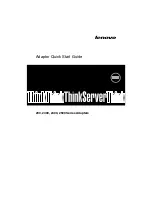
S e n d d o c u m e n t a t i o n c o m m e n t s t o m d s f e e d b a c k - d o c @ c i s c o . c o m
6-3
Cisco MDS 9000 Family CLI Configuration Guide
OL-16184-01, Cisco MDS SAN-OS Release 3.x
Chapter 6 Using the CFS Infrastructure
About CFS
•
Three modes of distribution.
–
Coordinated distributions: Only one distribution is allowed in the fabric at any given time.
–
Uncoordinated distributions: Multiple parallel distributions are allowed in the fabric except
when a coordinated distribution is in progress.
–
Unrestricted uncoordinated distributions: Multiple parallel distributions are allowed in the
fabric in the presence of an existing coordinated distribution. Unrestricted uncoordinated
distributions are allowed to run in parallel with all other types of distributions.
•
Supports a merge protocol that facilitates the merge of application configuration during a fabric
merge event (when two independent fabrics merge).
CFS Protocol
The CFS functionality is independent of the lower layer transport. Currently, in Cisco MDS switches,
the CFS protocol layer resides on top of the FC2 layer and is peer-to-peer with not client-server
relationship. CFS uses the FC2 transport services to send information to other switches. CFS uses a
proprietary SW_ILS (0x77434653) protocol for all CFS packets. CFS packets are sent to or from the
switch domain controller addresses.
CFS can also use IP to send information to other switches (see the
“CFS Distribution over IP” section
on page 6-11
).
Applications that use CFS are completely unaware of the lower layer transport.
CFS Distribution Scopes
Different applications on the Cisco MDS 9000 Family switches need to distribute the configuration at
various levels:
•
VSAN level (logical scope)
Applications that operate within the scope of a VSAN have the configuration distribution restricted
to the VSAN. An example application is port security where the configuration database is applicable
only within a VSAN.
•
Physical topology level (physical scope)
Applications might need to distribute the configuration to the entire physical topology spanning
several VSANs. Such applications include NTP and DPVM (WWN based VSAN), which are
independent of VSANs.
•
Betweenselected switches
Applications might only operate between selected switches in the fabric. An example application is
SCSI Flow Services, which operates between two switches.
CFS Distribution Modes
CFS supports different distribution modes to support different application requirements: coordinated and
uncoordinated distributions. Both modes are mutually exclusive. Only one mode is allowed at any given
time.
















































